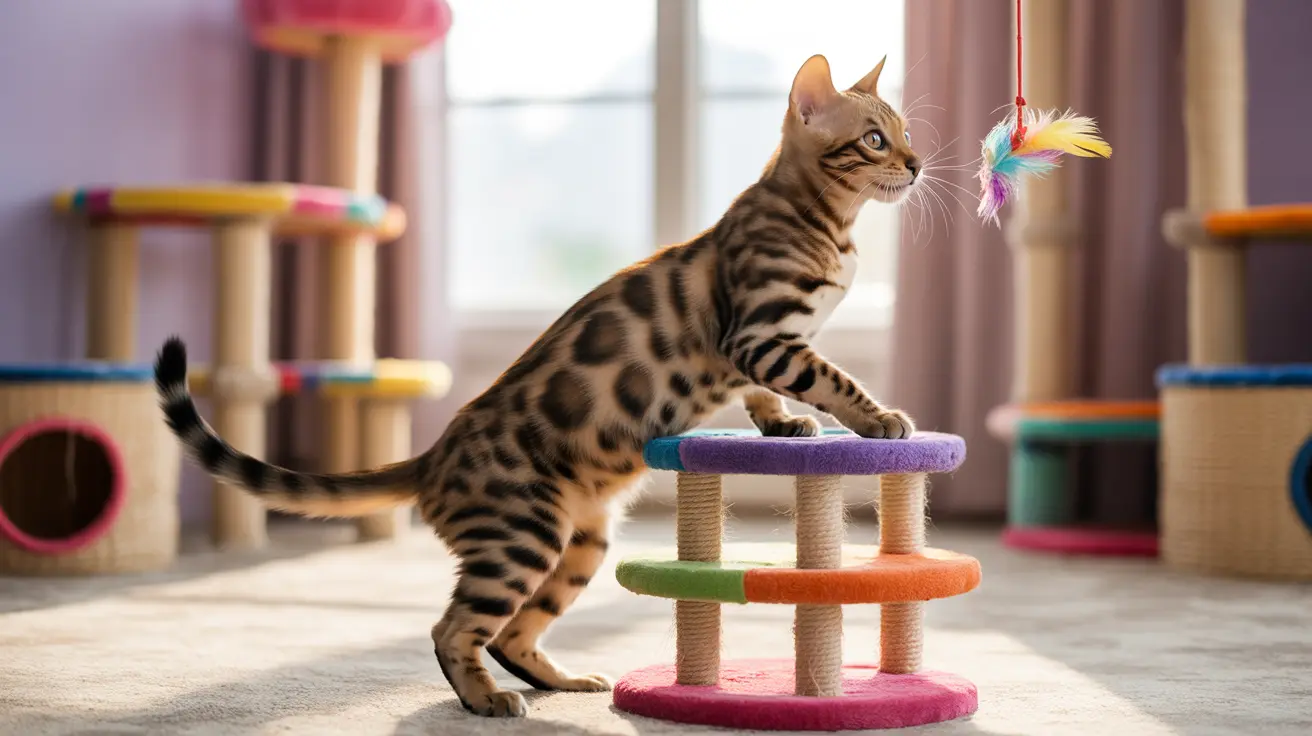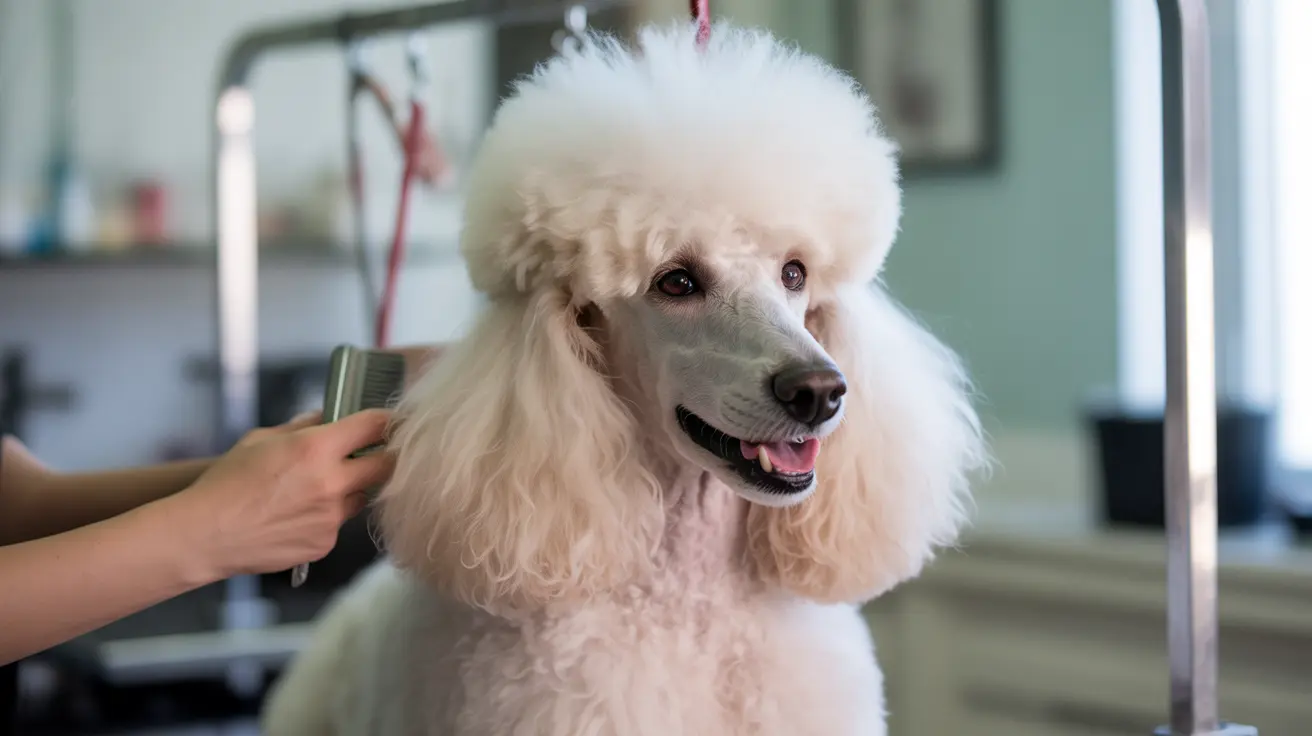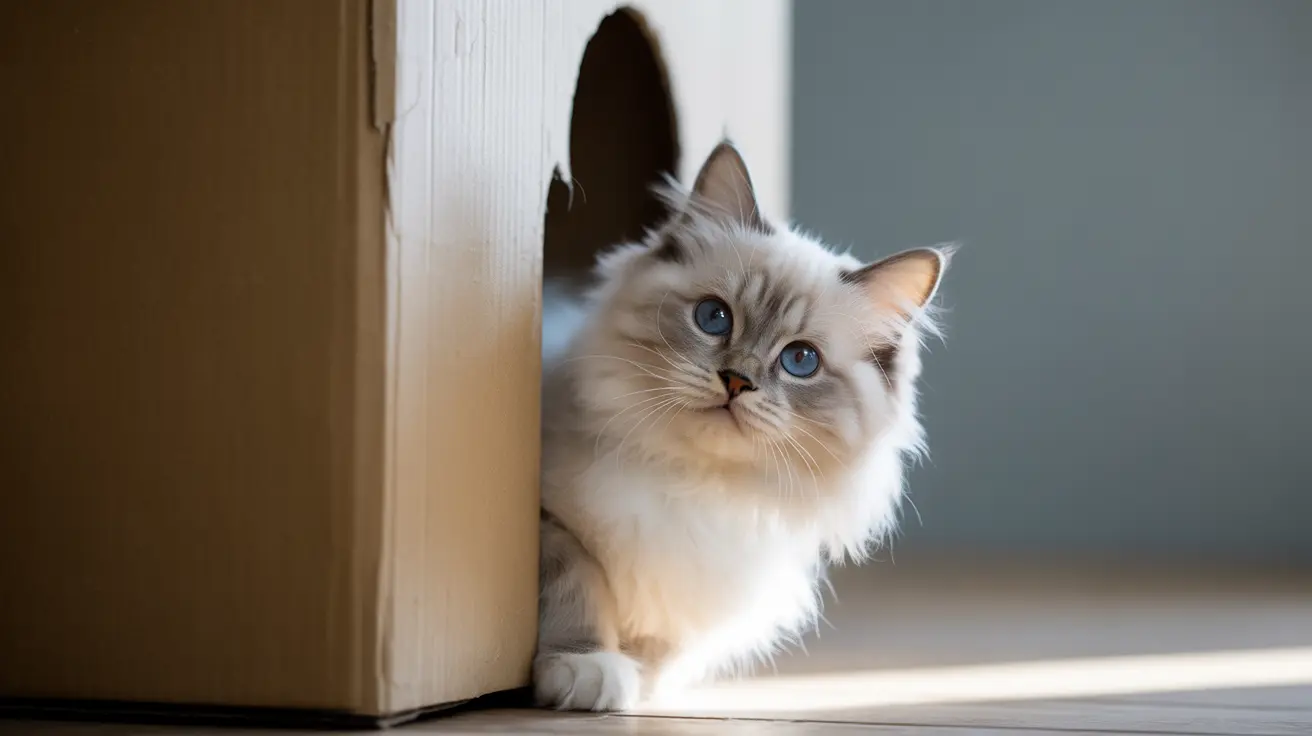American Curl Cat Care and Personality: The Complete Guide to This Unique Breed
The American Curl cat stands out in the feline world with its distinctive backward-curved ears and charming personality. This medium-sized breed, originating from a spontaneous genetic mutation discovered in Lakewood, California in 1981, has captured the hearts of cat enthusiasts worldwide with its unique appearance and delightful temperament. Whether you're considering adding an American Curl to your family or already share your home with one of these special cats, understanding their specific care needs and personality traits is essential for providing the best possible life for your feline companion.
From their playful, kitten-like nature that persists throughout their 10 to 18-year lifespan to their special ear care requirements, American Curls offer a rewarding pet ownership experience for those willing to meet their needs. This comprehensive guide will explore everything you need to know about American Curl cat care and personality, helping you create an environment where these intelligent, affectionate cats can thrive.
Understanding the American Curl's Distinctive Physical Characteristics
The American Curl's most recognizable feature is undoubtedly its unique ears, which curl back from the face toward the center of the back of the skull in an elegant arc. This distinctive trait results from a dominant genetic mutation known as the curl gene (Cu), which is not sex-linked and differs significantly from the ear mutations found in other breeds like Scottish Folds. Unlike Scottish Folds, American Curls do not suffer from associated cartilage or bone abnormalities, even in homozygous individuals.
American Curl kittens are born with straight ears that begin to curl within forty-eight hours of birth. The curling process continues until the kitten reaches four months of age, at which point the ears become firm and stiff at the base with flexible, rounded tips. For show-quality cats, the ears must curl in an arc between 90 and 180 degrees, with a 90-degree curl being preferred. Cats are disqualified from competition if their ears touch the back of their skulls.
These medium-sized cats typically weigh between 5-10 pounds, with females generally ranging from 5-8 pounds and males from 7-10 pounds. They don't reach full maturity until 2-3 years of age, developing a semi-foreign rectangular body with moderate musculature, medium-sized bones, and a long, flexible tail that tapers to a rounded tip. Their walnut-shaped eyes are set obliquely, adding to their alert and intelligent expression.
American Curl Personality: Friendly, Playful, and Intelligent
American Curls are renowned for their exceptional temperament, often described as friendly, people-oriented cats that retain their kitten-like personality throughout their entire lives. This breed is naturally affectionate, playful, intelligent, and remarkably adaptable to various living situations. They form strong bonds with their human families and are known for following their favorite family members from room to room, though they're not particularly vocal cats.
One of the most endearing qualities of American Curls is their ability to easily adjust to other pets and children, making them excellent additions to multi-pet households and families. They thrive on companionship and interactive play, enjoying games such as fetch and showing enthusiasm for chasing toys and climbing cat trees. However, they don't enjoy being left alone for extended periods and do best in homes where they receive regular attention and interaction.
While American Curls are generally social and adaptable, they can initially be shy around strangers. With proper socialization and gradual introduction techniques, they typically warm up to new people and situations. Their intelligence makes them excellent candidates for learning tricks and engaging in interactive play that challenges their minds.
Creating the Perfect Indoor Environment for American Curls
American Curls can thrive both indoors and with outdoor access, though outdoor access isn't mandatory for their wellbeing. For indoor cats, creating a stimulating environment is crucial to meet their playful nature and intelligence. These cats require adequate exercise and mental stimulation to maintain their physical and emotional health.
Investing in quality cat trees and climbing structures is essential, as American Curls love to climb and explore vertical spaces. Multiple levels of perches, hiding spots, and interactive elements will keep them engaged and provide necessary physical exercise. Rotating toys regularly helps maintain their interest and prevents boredom.
Interactive play sessions are vital for American Curls, who enjoy games that challenge their hunting instincts. Feather wands, laser pointers (always ending the session with a physical toy they can catch), puzzle feeders, and treat-dispensing toys all provide excellent mental stimulation. These cats particularly enjoy fetch-like games and will often bring toys back to their owners for continued play.
Grooming and Coat Care for American Curls
American Curls come in both longhaired and shorthaired varieties, with both types featuring soft, silky coats that lie flat against their bodies. One of the advantages of this breed is their relatively low maintenance grooming needs, thanks to their minimal undercoat. The silky texture of their fur helps prevent matting and tangling, though regular brushing is still beneficial.
Longhaired American Curls require more frequent brushing to avoid mats and tangles, typically needing grooming sessions 2-3 times per week. Shorthaired varieties can usually be maintained with weekly brushing sessions. Regular grooming not only keeps their coat healthy and beautiful but also helps strengthen the bond between cat and owner while allowing for health monitoring.
Beyond coat care, American Curls need routine nail trimming every few weeks and regular dental care such as brushing or providing dental treats. These basic grooming practices help maintain overall health and prevent common issues that can affect any cat breed.
Special Ear Care: Protecting Those Unique Curls
The American Curl's distinctive ears require special attention and care to prevent injuries and infections. Due to their unique shape and structure, these cats can be prone to ear infections and require regular ear cleaning to prevent buildup of wax and bacteria. However, their ears are also delicate and must be handled with extreme care.
Never attempt to bend an American Curl's ears forward, as this can cause serious injury to the cartilage and permanently damage their ear structure. When cleaning the ears, use only gentle, cat-safe ear cleaning solutions and soft cotton balls or pads. Clean only the visible parts of the ear canal and avoid inserting anything deep into the ear.
For American Curls with outdoor access, protecting their ears from sunburn is crucial. The curved shape and often lighter-colored skin on the ears can make them susceptible to sun damage. Apply cat-safe sunscreen to the ear tips and edges when your cat will be spending extended periods outdoors, especially during peak sun hours.
Nutritional Needs and Feeding Guidelines
American Curls thrive on high-quality diets rich in animal-based protein, suited to their life stage and individual weight management needs. Like all cats, they are obligate carnivores requiring specific nutrients found primarily in meat sources. Choose premium cat foods that list real meat as the first ingredient and avoid foods with excessive fillers or by-products.
Feeding should be tailored to the cat's age, activity level, and health status. Adult American Curls typically do well with 2-3 meals per day, while kittens may require more frequent feeding. Monitor your cat's weight regularly, as American Curls can be prone to obesity if not properly exercised and fed appropriate portions.
Treats should be given in moderation, not exceeding 10-15% of daily calories. Many American Curls enjoy interactive feeding through puzzle feeders or treat-dispensing toys, which provide mental stimulation while satisfying their food motivation. Always ensure clean, fresh water is available, as proper hydration is essential for urinary tract health and overall wellbeing.
Health Considerations and Preventive Care
American Curls are generally healthy cats with no common genetic health issues directly related to their ear mutation. However, like all breeds, they can be susceptible to certain health concerns that require attention and preventive care. Their lifespan typically ranges from 10 to 18 years with proper care and regular veterinary attention.
The most breed-specific health concern is their susceptibility to ear infections due to their unique ear anatomy. The curved structure can sometimes trap debris or moisture, creating an environment conducive to bacterial or yeast growth. Regular ear cleaning and monitoring for signs of infection, such as odor, discharge, or excessive scratching, are essential preventive measures.
Common health issues that can affect American Curls include dental disease and obesity. Regular dental care, including brushing and professional cleanings, helps prevent periodontal disease. Maintaining appropriate weight through proper diet and exercise prevents obesity-related complications such as diabetes and joint problems.
Socialization and Behavioral Training
Early socialization is crucial for American Curls to develop into well-adjusted, confident cats. While they are naturally friendly and adaptable, exposing them to various people, animals, sounds, and experiences during their kitten years helps prevent shyness and fearfulness later in life. Gradual introduction techniques work best when introducing American Curls to new pets or strangers.
When introducing a new American Curl to existing pets, allow for a slow adjustment period. Start with scent swapping, where pets can smell each other without direct contact. Gradually progress to visual contact through baby gates or cracked doors before allowing supervised interactions. American Curls generally adapt well to other pets, but patience during the introduction process ensures success.
Their intelligence makes American Curls excellent candidates for training. They can learn their names, come when called, and even perform tricks. Positive reinforcement training using treats, praise, and play works best. Many American Curls enjoy learning interactive games and can be trained to walk on leashes for safe outdoor adventures.
Considerations for First-Time Cat Owners
American Curls can make excellent pets for first-time cat owners due to their friendly, adaptable nature and relatively straightforward care requirements. Their affectionate personality and tolerance for handling make them suitable for families with children, while their intelligence and playfulness provide rewarding interaction opportunities.
However, prospective owners should be prepared for the breed's need for companionship and interaction. American Curls don't do well when left alone for extended periods and thrive in homes where they receive regular attention. Their playful nature also means providing adequate mental stimulation and exercise opportunities is essential for their wellbeing.
Due to their rarity compared to other breeds, finding a reputable American Curl breeder may require patience and research. When purchasing from a breeder, ensure they provide healthy, well-socialized cats with proper documentation and health clearances. The investment in a well-bred American Curl from a responsible breeder pays dividends in the form of a healthy, well-adjusted companion.
Frequently Asked Questions
Q: How often should I clean my American Curl's ears?
American Curls should have their ears checked weekly and cleaned as needed, typically every 2-3 weeks or when you notice wax buildup. Due to their unique ear shape, they can be prone to ear infections, so regular monitoring is essential. Use only cat-safe ear cleaning solutions and never bend the ears forward during cleaning.
Q: Do American Curls need special exercise requirements compared to other cat breeds?
While American Curls don't require more exercise than other breeds, they do need adequate physical activity and mental stimulation due to their playful, intelligent nature. They enjoy interactive play, climbing, and games like fetch. Providing cat trees, rotating toys, and daily play sessions will keep them healthy and happy.
Q: Are American Curls good with children and other pets?
Yes, American Curls are known for their friendly, adaptable nature and generally get along well with children and other pets. They easily adjust to multi-pet households and family situations. However, proper socialization and gradual introductions are important, especially since they can initially be shy around strangers.
Q: What's the difference between longhaired and shorthaired American Curls in terms of care?
Both varieties have silky coats with minimal undercoat, making grooming relatively easy. Longhaired American Curls require more frequent brushing (2-3 times per week) to prevent mats and tangles, while shorthaired varieties typically need only weekly brushing. Both types have the same personality traits and general care requirements.
Q: How can I tell if my American Curl kitten's ears will be show quality?
American Curl kittens are born with straight ears that begin curling within 48 hours. The ears stop curling at around 4 months of age. Show-quality ears should curl in an arc between 90 and 180 degrees, with 90 degrees being preferred. The ears should be firm at the base with flexible tips and must not touch the back of the skull.
Q: What should I feed my American Curl to maintain optimal health?
American Curls thrive on high-quality diets rich in animal-based protein, suited to their life stage and weight management needs. Choose premium cat foods with real meat as the first ingredient. Treats should not exceed 10-15% of daily calories, and fresh water should always be available. Monitor weight regularly to prevent obesity.
Q: Are there any health issues specific to American Curls I should watch for?
American Curls are generally healthy with no common genetic health issues related to their ear mutation. However, they can be prone to ear infections due to their unique ear anatomy, so regular ear care is essential. Like all cats, they can develop dental disease and obesity, making preventive care and regular veterinary checkups important.
Conclusion
The American Curl represents a unique and rewarding choice for cat lovers seeking an intelligent, affectionate, and visually distinctive feline companion. Their combination of striking curled ears, playful personality, and adaptable nature makes them suitable for various living situations and family types. Understanding their specific needs for ear care, mental stimulation, and social interaction is key to providing these remarkable cats with a fulfilling life.
By focusing on proper American Curl cat care and personality development through adequate socialization, environmental enrichment, and preventive healthcare, owners can enjoy many years with these charming companions. Whether you're drawn to their unique appearance or their loving temperament, American Curls offer a special bond that makes the investment in their specialized care well worthwhile for dedicated cat enthusiasts.






